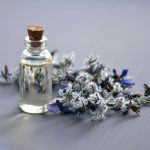Skin reactions from oils can be frustrating, especially when they lead to itching or blisters. Rash oil, a term often linked to reactions from plant oils like urushiol, affects many people yearly. Whether you’re dealing with an oil-induced rash or seeking safe solutions, this Q&A article answers common questions. As a leading fragrance oil factory, Fasinaaroma offers insights into hypoallergenic oil options to help you avoid rash oil issues. Let’s dive into the most pressing questions about oil contact dermatitis and how to manage it effectively.
What Is Rash Oil and Why Does It Happen?
What exactly is rash oil?
Rash oil refers to skin irritation caused by oils, most commonly urushiol from plants like poison ivy, poison oak, or poison sumac. This sticky substance triggers an allergic reaction, leading to oil contact dermatitis. Unlike typical allergies, it’s a delayed hypersensitivity, meaning symptoms appear hours or days later.
What causes an oil-induced rash?
The primary culprit is urushiol, a skin irritant found in certain plants. When it contacts skin, it binds to proteins, prompting an immune response. For example, brushing against poison ivy during a hike can lead to an oil-triggered rash. Other oils, like those from mangoes or cashews, may cause similar issues due to related compounds. Additionally, undiluted essential oils can irritate, especially on sensitive skin.
Who is most at risk for an oil rash reaction?
About 70-85% of people are sensitive to urushiol, per the American Academy of Dermatology. Those with a history of sensitive skin or allergies face higher risks. Outdoor workers, hikers, and gardeners often encounter these plants, increasing their chances of developing an oil allergy rash. However, even indirect exposure—like touching contaminated clothing—can trigger it.
What Are the Symptoms of Rash Oil?
How do I recognize an oil-induced rash?
Symptoms of rash oil typically start with redness and intense itching. Swelling follows, often with small bumps or blisters filled with clear fluid. These blisters don’t spread the rash, but scratching can transfer urushiol to other areas before washing. In severe cases, a burning sensation or widespread rash occurs, especially if exposed to large amounts.
How long do symptoms last?
For most, symptoms peak within 48-72 hours and last 1-3 weeks, depending on severity and treatment. Mild cases resolve faster with proper care, while severe oil contact dermatitis may linger without medical intervention. For instance, untreated rashes near eyes or genitals can cause complications, so monitoring is key.
Can children or babies get an oil-triggered rash?
Yes, children and babies can develop an oil rash reaction, often with greater sensitivity due to thinner skin. Parents should watch for redness or blisters after outdoor play. If symptoms include fever or pus, an infection might be present, requiring a doctor’s visit.
How Can I Treat Rash Caused by Oil Contact?
What’s the first step to treat an oil-induced rash?
Act fast by washing the area with cool water and soap within 30 minutes of exposure. This removes urushiol, reducing the severity of the oil-triggered rash. Avoid hot water, as it opens pores, allowing more oil absorption. Commercial cleaners with surfactants also work well.
What home remedies help with rash oil symptoms?
Several remedies soothe discomfort. For example, cold compresses applied for 10 minutes reduce itching and swelling. Oatmeal baths, thanks to their antioxidants, calm inflammation. Aloe vera gel, scraped from leaves or store-bought, hydrates and fights bacteria. Coconut oil, rich in lauric acid, supports healing when applied to unbroken skin. Additionally, a baking soda paste balances skin pH, easing itch from an oil rash reaction.
Are there over-the-counter or medical treatments?
Calamine lotion or 1% hydrocortisone cream relieves itching. For severe cases, doctors may prescribe oral steroids like prednisone. If scratching leads to infection, antibiotics become necessary. Always consult a professional if symptoms persist beyond two weeks or affect sensitive areas.
To explore natural remedy options further, check out this resource on cosmetics and fragrance solutions.
How Can I Prevent Rash Oil Reactions?
What steps prevent an oil-induced rash?
Prevention starts with awareness. Learn to identify plants like poison ivy (three leaflets), poison oak (oak-like leaves), or poison sumac (red stems). Wear long sleeves and gloves outdoors. Barrier creams create a protective layer, reducing urushiol contact. Wash pets, tools, or clothing after exposure to avoid spreading the oil.
Can carrier oils reduce oil allergy rash risks?
Absolutely. Carrier oil, like jojoba or almond, dilutes potent essential oils, making them safer for skin. By lowering concentration, they minimize irritation, especially for those prone to oil contact dermatitis. For example, mixing tea tree oil with a carrier oil reduces the chance of an oil rash reaction.
Which oils are safe for sensitive skin with rash history?
Hypoallergenic oil options, such as olive or coconut, suit sensitive skin. Chamomile or diluted peppermint essential oils may help chronic itch, per some studies, but patch test first. Avoid undiluted tea tree or clove oils, as they can act as a skin irritant for some. Choosing therapeutic-grade oils without additives ensures safety.
Which Fasinaaroma Products Help Avoid Rash Oil Issues?
How does Fasinaaroma ensure safe oils for sensitive skin?
Fasinaaroma, a high-tech fragrance oil factory in Guangzhou, China, produces safe, high-quality scents across a 60,000-square-meter facility. With ISO9001 certification and a capacity of 43,200 tons annually, their products undergo rigorous testing to avoid skin irritant issues like rash oil. Their R&D centers craft hypoallergenic oil blends, ideal for those worried about oil contact dermatitis.
What product categories does Fasinaaroma offer?
Their fragrance oils for candles deliver long-lasting scents without harsh compounds. These are perfect for users seeking safe, concentrated aromas. Explore their full range here.
Aroma diffuser fragrances enhance home environments with gentle, hypoallergenic options. These blends minimize risks of an oil-triggered rash when used in diffusers. Check out this collection for diffuser-friendly scents.
Tobacco flavours offer authentic notes for niche products, crafted to avoid irritation. Professionals value their purity. See the lineup here.
Microcapsule fragrances use innovative technology to encase scents, reducing direct skin contact and risks of an oil rash reaction. Discover this advanced approach here.
Perfume fragrance oils serve as safe bases for personal scents, especially when diluted with carrier oil. They prioritize hypoallergenic properties for sensitive skin. View the selection here.
Why choose Fasinaaroma for fragrance solutions?
Unlike retailers, Fasinaaroma focuses on manufacturing, ensuring purity and safety through advanced R&D and GMP workshops. Their global reach, exporting to over 100 countries, reflects their expertise in creating scents that enhance products without triggering an oil allergy rash.
Is Urushiol the Same as Rash Oil?
Are urushiol and rash oil identical?
Technically, urushiol is a specific oil causing rash oil reactions, like those from poison ivy. The term “rash oil” broadly covers any oil-induced rash, including from other sources like undiluted essentials. However, urushiol remains the most common trigger for oil contact dermatitis due to its potency.
Can other oils mimic urushiol’s effects?
Yes, oils from mangoes or cashews, part of the same plant family, contain similar compounds. Undiluted essential oils, if misused, can also act as a skin irritant, leading to an oil-triggered rash. Therefore, proper dilution with carrier oil is crucial.
Additional Questions About Rash Oil Management
Can essential oils treat rashes?
Some, like diluted chamomile, may soothe symptoms, per Medical News Today. However, evidence is limited, and allergies to essentials can worsen an oil rash reaction. Always dilute and test on a small area first.
How does environment affect rash oil risks?
Rural areas report millions of cases yearly, per the American Academy of Dermatology, due to plant prevalence. Burning plants releases urushiol in smoke, risking inhalation and skin issues. Urban dwellers face lower risks but should stay cautious with essential oils.
What myths surround rash oil?
One myth claims blisters spread the rash—false, as only urushiol spreads it before washing. Another suggests permanent immunity, but sensitivity can develop over time. Fact: Washing within 30 minutes minimizes severity, per Mayo Clinic.
How do carrier oils fit into daily routines?
Carrier oil dilutes essentials for safe use in baths, massages, or skincare. For example, olive oil hydrates without triggering an oil-induced rash. Incorporate them in small ratios (1:10) to avoid irritation.
What’s the science behind oil contact dermatitis?
Urushiol binds to skin proteins, triggering T-cell responses, per Wikipedia. This delayed reaction explains why symptoms appear later. Genetic factors influence sensitivity, with 15-30% of people naturally resistant, though this can change.
Expert Tips for Avoiding Rash Oil in Daily Life
How can I integrate safe oils?
Start with hypoallergenic oil in skincare or aromatherapy. Use diffusers for scent without direct contact. Patch test new products to avoid an oil allergy rash. In manufacturing, source from trusted suppliers like Fasinaaroma for safe formulations.
What role does sustainability play?
Eco-friendly sourcing reduces urushiol exposure risks. Factories like Fasinaaroma prioritize sustainable practices, ensuring safe, high-quality oils. Choosing certified brands supports both skin health and the environment.
Any real-life tips from users?
A hiker avoided rash oil by wearing gloves and washing immediately after exposure. A crafter switched to Fasinaaroma’s hypoallergenic oil blends, enjoying scents rash-free. These stories highlight proactive prevention.
Conclusion: Empowering You Against Rash Oil
This Q&A has covered the essentials of rash oil, from causes like urushiol to symptoms and safe remedies. By understanding triggers and choosing hypoallergenic oil options, you can prevent oil contact dermatitis. Fasinaaroma’s innovative, skin-friendly fragrance solutions make it easier to enjoy scents safely. Have more questions? Explore their product ranges to find the perfect fit for your needs.

